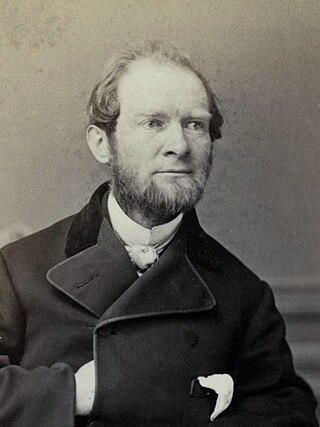
Lapidary is the practice of shaping stone, minerals, or gemstones into decorative items such as cabochons, engraved gems, and faceted designs. A person who practices lapidary techniques of cutting, grinding, and polishing is known as a lapidary or lapidarist. Hardstone carving requires specialized carving techniques.

DuPage County is a county in the U.S. state of Illinois, and one of the collar counties of the Chicago metropolitan area. As of the 2020 census, the population was 932,877, making it Illinois' second-most populous county. Its county seat is Wheaton.

Elmhurst is a city in DuPage and Cook counties in the U.S. state of Illinois. It is a western suburb of Chicago. The population was 45,786 at the 2020 census.

Oak Brook is a village in DuPage County, Illinois, with a very small portion in Cook County. The population was 8,163 at the 2020 census.

The Heard Museum is a private, not-for-profit museum in Phoenix, Arizona, United States, dedicated to the advancement of American Indian art. It presents the stories of American Indian people from a first-person perspective, as well as exhibitions of traditional and contemporary art by American Indian artists and artists influenced by American Indian art.

Minerva Josephine Chapman (1858–1947) was an American painter. She was known for her work in miniature portraiture, landscape, and still life.

Richard Howard Hunt was an American artist and sculptor. In the second half of the 20th century, he became "the foremost African-American abstract sculptor and artist of public sculpture." A Chicago native, Hunt studied at the School of the Art Institute of Chicago in the 1950s. While there he received multiple prizes for his work. In 1971, he was the first African-American sculptor to have a retrospective at Museum of Modern Art. Hunt has created over 160 public sculpture commissions, more than any other sculptor in prominent locations in 24 states across the United States.

Orval Halleck Caldwell was a Chicago-area painter. He was a prolific painter of landscapes in both oil and watercolor.

Mary Lee Hu is an American artist, goldsmith, and college educator, known for using textile techniques to create intricate woven wire jewelry.

Suellen Rocca was an American artist, one of the original Chicago Imagists, a group in the 1960s and 1970s who turned to representational art. She exhibited with them at the Hyde Park Art Center from 1966 through 1969. She was curator of the art collection and director of exhibitions at Elmhurst College.
Florence Koehler was an American craftswoman, designer and jeweler. She was one of the best-known jewelers of the Arts and Crafts movement that flourished in the late 19th and early 20th centuries.

Smithsonian Affiliations is a division of the Smithsonian Institution that establishes long-term partnerships with non-Smithsonian museums and educational and cultural organizations in order to share collections, exhibitions and educational strategies and conduct joint research. Partner organizations are known as "Smithsonian Affiliates".

Joyce J. Scott is an African-American artist, sculptor, quilter, performance artist, installation artist, print-maker, lecturer and educator. Named a MacArthur Fellow in 2016, and a Smithsonian Visionary Artist in 2019, Scott is best known for her figurative sculptures and jewelry using free form, off-loom beadweaving techniques, similar to a peyote stitch. Each piece is often constructed using thousands of glass seed beads or pony beads, and sometimes other found objects or materials such as glass, quilting and leather. In 2018, she was hailed for working in new medium — a mixture of soil, clay, straw, and cement — for a sculpture meant to disintegrate and return to the earth. Scott is influenced by a variety of diverse cultures, including Native American and African traditions, Mexican, Czech, and Russian beadwork, illustration and comic books, and pop culture.

Sabina Ott was an American artist known for her broad range of work—from painting to installation to sculpture—and her central role in the art world as teacher, administrator, and recently, as the founder of the exhibition space Terrain, which invites artists to create installations and performances using the exterior of her Oak Park home.

Eda Hurd Lord Young Dixon was a metal artist working within the Arts and Crafts movement at the beginning of the 20th century.

Marjorie Schick was an innovative American jewelry artist and academic who taught art for 50 years. Approaching sculptural creations, her avant-garde pieces have been widely collected. Her works form part of the permanent collections of many of the world's leading art museums, including the Hermitage Museum in Saint Petersburg, Russia; the Museum of Arts and Design in New York City; the National Museum of Modern Art in Kyoto, Japan; the Philadelphia Museum of Art in Pennsylvania; and the Victoria and Albert Museum of London.

Thomas Barbour Bryan was an American businessman, lawyer, and politician.

Richard Loving (1924–2021) was an American artist and educator, primarily based in Chicago, Illinois. He gained recognition in the 1980s as a member of the "Allusive Abstractionists," an informal group of Chicago painters, whose individual forms of organic abstraction embraced evocative imagery and metaphor, counter to the dominant minimalist mode. He is most known for paintings that critics describe as metaphysical and visionary, which move fluidly between abstraction and representation, personalized symbolism taking organic and geometric forms, and chaos and order. They are often characterized by bright patterns of dotted lines and dashes, enigmatic spatial fields, and an illuminated quality. In 2010, critic James Yood wrote that Loving's work "mull[ed] over the possibilities of pattern and representation, of narrative and allegory" to attain a kind of wisdom, transcendence and acknowledgement of universals, "seeking understanding of self within the poetics of the physical world."

Tony Phillips is an American artist and educator based in Chicago whose work has included painting, drawing and film. He is associated with figurative and surrealist currents of Chicago art in the later 20th century, without precisely being identified with such groups as the Imagists or The Hairy Who; critics have suggested that the lack of such affiliations has caused him and similar artists in the city to be comparatively overlooked. His art employs painterly, softly modeled representation that belies sometimes dark psychological explorations and fantastical or archetypal scenarios. Art in America critic Robert Berlind wrote, "Phillips's best pictures, with their particular tension between humor and eeriness, between the familiar and the eccentric, between the fanciful and the obsessive, are like a high-wire act, carried off in dream time."
Elias Jade Not Afraid is an Apsáalooke (Crow/Absaroke) artist known for his traditional and non-traditional beadwork.



















